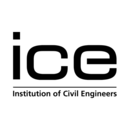Digital transformation - engineers need to keep pace
Contents |
[edit] Introduction
The challenges and opportunities associated with the digital transformation of the infrastructure sector are recognised globally.
An exponential increase in computing power over the past 50 years has transformed the infrastructure lifecycle. Professionals expect to be able to monitor and update information in real-time, through intuitive interfaces.
Rather than base-line project schedules being batch-processed on room-size computers, now smaller, cheaper devices and the use of digital information and analytics has become pervasive across the use, operation and delivery of infrastructure.
This brings both opportunities and challenges in managing innovation and interdependencies associated with this digital transformation.
[edit] Decisions for the whole life of assets
First, there is an opportunity to see projects as interventions in civil infrastructure systems. Owners and operators of infrastructure, for example in water and transport, are beginning to make investment decisions in relation to total costs rather than capital or operational expenditure.
Digital information enables them to make decisions that consider changes in patterns of use, maintenance and new build solutions, with alliancing approaches enabling the supply chain to be engaged in discussion of outcomes before the outputs of a project are defined. The Digital Built Britain agenda starts to consider this wider context of digital information.
[edit] Real time decision making
Second, there is a pressing need and opportunity for next generation tools and processes to provide information to infrastructure decision-makers at the time they need to make the decision.
As digital data sets get larger, running into millions of documents on the largest projects, it gets harder for engineers and managers involved in delivery to overview and understand aspects of the infrastructure design.
There are opportunities to automate existing approaches to identifying interdependencies in complex systems and to develop new collaborative visualisation approaches to enable engineers to have more informed conversations before making decisions.
[edit] Asset v technological lifecycles
Third, there is both the need and opportunity for continuous innovation. The ‘clockspeed’ of infrastructure delivery is substantially longer than the clockspeed of developments in digital technologies. This is a challenge in delivery.
A major infrastructure project such as Crossrail, for example, comes into service in 2018, but was being designed before the iPhone was available [see an artist's impression of Canary Wharf Crossrail station at the top of the article].
No longer can such delivery projects hold the digital technologies that they use stable for the duration of the project. They have to develop strategies for piloting new technology and continuing to innovate during delivery.
The innovation programme at Crossrail has been a success in this regard and is adopted for the next generation of major UK infrastructure projects.
Digital transformation is also a challenge for the through-life management of infrastructure. A new railway, such as Crossrail, may be in service for over 100 years and the digital technologies used to operate and maintain it are likely to continue to evolve over this timeframe.
Infrastructure owners and operators will need to develop strategies to store digital information and integrate and use different generations of sensor technology, robotics, continuous survey, visualisation and data analytic technologies.
[edit] The importance of continuous research
To compete in this transformed industry there is a need for a research base to support the industry in digital transformation – both immediately and towards the industry of the future.
Not least, investment in the UK Collaboratorium for Research on Infrastructure and Cities (UKCRIC) in addition to the existing work on innovation programmes where there is an opportunity for the further integration of digital strategy and innovation strategy.
This article was originally published here by ICE on 16 Mar 2017. It was written by Jennifer Whyte, Professor of Systems Integration, Imperial College London.
--The Institution of Civil Engineers
[edit] Related articles on Designing Buildings
- Adapting your technology to the new working normal.
- Articles by ICE on Designing Buildings Wiki.
- Crossrail 2.
- Data and infrastructure productivity.
- Digital Built Britain.
- Digital communications and infrastructure dependencies.
- Digital transformation - overcoming barriers.
- Digital transformation - what does it mean?
- How to gain a competitive edge with digital technologies.
- How to make the digital revolution a success.
- Infrastructure and cyber attacks.
- Infrastructure that allows humans to flourish.
- Intelligent building management systems IBMS.
- Project 13 and World Economic Forum partnership.
- State of the nation: Digital transformation.
- UK BIM Alliance and CIOB join forces.
- Vital infrastructure and redevelopment.
Featured articles and news
Deputy editor of AT, Tim Fraser, discusses the newly formed society with its current chair, Chris Halligan MCIAT.
Barratt Lo-E passivhaus standard homes planned enmasse
With an initial 728 Lo-E homes across two sites and many more planned for the future.
Government urged to uphold Warm Homes commitment
ECA and industry bodies write to Government concerning its 13.2 billion Warm Homes manifesto commitment.
Places of Worship in Britain and Ireland, 1929-1990. Book review.
The emancipation of women in art.
CIOB Construction Manager of the Year 2025
Just one of the winners at the CIOB Awards 2025.
Call for independent National Grenfell oversight mechanism
MHCLG share findings of Building Safety Inquiry in letter to Secretary of State and Minister for Building Safety.
The Architectural Technology Awards
AT Awards now open for this the sixth decade of CIAT.
50th Golden anniversary ECA Edmundson awards
Deadline for submissions Friday 30 May 2025.
The benefits of precast, off-site foundation systems
Top ten benefits of this notable innovation.
Encouraging individuals to take action saving water at home, work, and in their communities.
Takes a community to support mental health and wellbeing
The why of becoming a Mental Health Instructor explained.
Mental health awareness week 13-18 May
The theme is communities, they can provide a sense of belonging, safety, support in hard times, and a sense purpose.
Mental health support on the rise but workers still struggling
CIOB Understanding Mental Health in the Built Environment 2025 shows.
Design and construction material libraries
Material, sample, product or detail libraries a key component of any architectural design practice.
Construction Products Reform Green Paper and Consultation
Still time to respond as consultation closes on 21 May 2025.
Resilient façade systems for smog reduction in Shanghai
A technical approach using computer simulation and analysis of solar radiation, wind patterns, and ventilation.

























